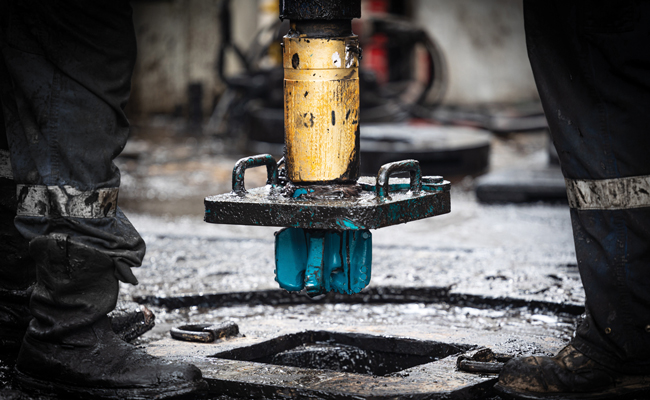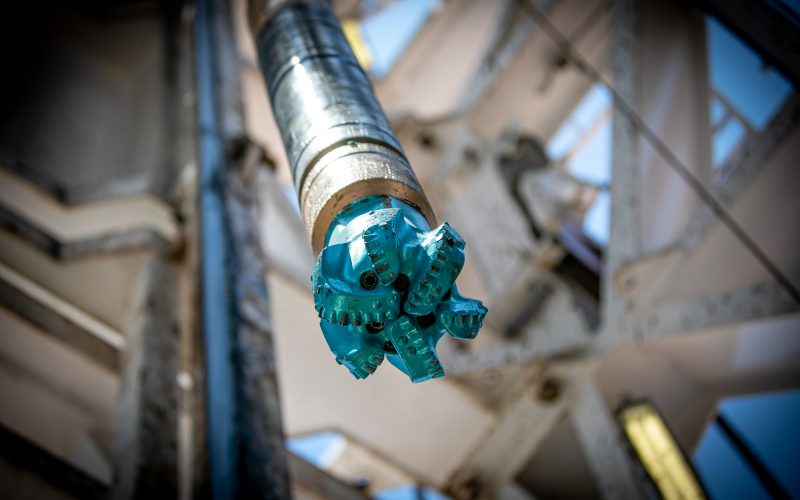Recently featured in AOGR Magazine, Ulterra’s US Sales Engineer Manager, Jonathon Schliem, explains the continuous evolution of drill bit design and its impact on drilling efficiencies.
Schliem emphasizes how longer laterals, improved bit designs, and enhanced drilling techniques contribute to increased efficiency and performance gains for US operators, particularly in the Delaware Basin. Through rapid design iteration, internal process improvements, and close collaboration between service companies and operators, drilling performance continues to improve through sustained incremental gains.
Learn more about how Ulterra is developing drill bits to drill faster and farther in the full article below or in the April 2024 AOGR Magazine.
Robust BHAs And Better Bits Drill Faster And Farther
By Colter Cookson
U.S. oil production continues to set records with fewer rigs as rates of penetration increase, nonproductive time falls and laterals reach as far as four miles.
“Advances in horizontal drilling and hydraulic fracturing have increased well productivity, enabling U.S. producers to extract more crude oil from new wells drilled while maintaining production from legacy wells,” the U.S. Energy Information notes.
The increase in new wells’ production comes in part from the longer laterals enabled by rapid improvements in drilling efficiency. Whether these gains originate from novel ideas or gradual refinements to proven concepts, they are delivering step changes in performance.
The Delaware Basin illustrates how significant and fast progress can be. “An average well in the Delaware Basin requires two fewer bottomhole assemblies today than it did in the first quarter of 2020,” says Jonathon Schliem, U.S. sales engineer manager for Ulterra. “The time savings from eliminating trips varies from well to well, but it can often result in saving days of nonproductive time.”
BHAs can stay in the hole longer thanks partly to improvements in bit design. “For example, shaped cutters that mitigate downhole dysfunction have taken off in the Delaware Basin,” Schliem says. “Shaped cutters have been around for some time, but we have hit a turning point in terms of adoption as the cutters have built a track record that allows us to quantify how much they increase efficiency.”
Meanwhile, advances in materials science and manufacturing are equipping bits with more robust hardfacing and matrix powders, Schliem says. Add improvements to motors, rotary steerable systems and other BHA components, and efficiency can improve quickly.
“A year and a half ago, I would have advised many operators in the Delaware Basin to plan for two or three vertical BHAs or to plan for a dedicated curve assembly rather than trying to drill the curve and lateral in a single run. At that point, the ROP gains from swapping to a fresh bit made up for the tripping time,” he says. “Today, we are seeing higher one-bit tendencies, because bits and BHAs can stay in the hole longer and maintain high instantaneous ROPs.”
Energy is another critical aspect that is pushing performance, Schliem observes. There is more energy at the bit today than ever before. Motors are more robust, and rigs are capable of higher flow rates. “In the past five years, we have seen the average flow rates across the United States increase by up to 20%,” he details. “Our engineering teams are looking at how to maximize that flow to get cuttings away from the bit as quickly as possible.”
Consistency
As operators dial in on their acreage, they are asking BHAs for more consistent and repeatable performance, Schliem reflects. “By the time they move from delineation to development, many operators have enough data to understand what their performance should look like given today’s technology. They use that information to set a bar, so they know what to expect,” he clarifies.
As part of the push for more consistent performance, Schliem says drilling teams are emphasizing directional control. “This is true not only in the curve and lateral, but also in the vertical section,” he reports. “With more wells out there than ever, avoiding collisions has become extremely important.”
Schliem adds that a directionally capable BHA helps drilling teams achieve consistent performance by minimizing slide time.
Faster drilling speeds make quick corrections more important than ever, Schliem assesses. “Our drive to improve directional responsiveness has led to shortened cutter layout profiles and recently sparked a resurgence in shankless bits like our original UD513 design,” he says. “Now, using modern bit construction techniques, we can improve both responsiveness and tracking by matching the correct profile length with more contoured gauge pad designs.”
Strong directional control can help set the well up for long-term success, Schliem remarks. “Even on the drill bit side, we are seeing more people discuss how the drilling program affects completion and production,” he relates. “Usually, that manifests as operators asking us to design bits that minimize tortuosity so it’s easier to get tools into and out of the well.”
Accelerating Iteration
Whether an application calls for a longer profile that will drill a smooth, straight lateral, an aggressive design that will deliver eye-popping ROPs or a workhorse that will endure hard and abrasive formations, Schliem says it’s vital to learn from each run and consistently improve performance.
“We are not looking for one-hit wonders,” he stresses. “What moves the industry forward month over month and year over year are the constant incremental gains that we achieve together.”
Sustaining those gains requires a broad focus, Schliem suggests. “It’s not only making sure the designs are improving 2% or 3% with every iteration,” he says. “As a bit provider, we also need to look at our internal processes to figure out how we can be faster.”

Thanks in part to rapid design iteration, drill bits are getting better at harnessing the growing amount of energy provided by the rig and mud motor. In conjunction with improvements to other BHA components, Ulterra says the latest bits stay in the hole longer while maintaining impressive instantaneous rates of penetration.
Those internal processes range from manufacturing and back-office support to design and performance analyses. “We want to get as much information as we can from each bit dull and make sure we are addressing the problems seen in the field,” Schliem says.
“Maintaining trust and having strong relationships with customers is key,” he comments. “In cases when we are granted access to drilling data, we treat that as a privilege and work hard to reward it with quick feedback. That information not only gives us extra insight into how our bits perform, but also allows us to do our best work together with customers in developing products that aim directly at their operational goals.
“With the drilling data, we can produce a complete report on the bit’s directional tendencies, how it rotated, how it slid, and where we hit our performance goals before the bit has even left the hole,” he adds.
Internal process improvements and close collaboration can lead to fast iteration, Schliem says. “In some cases, I have seen bits go from being ideas to physical products on the rig within a week, and that kind of responsiveness is what drives us forward,” he illustrates.

